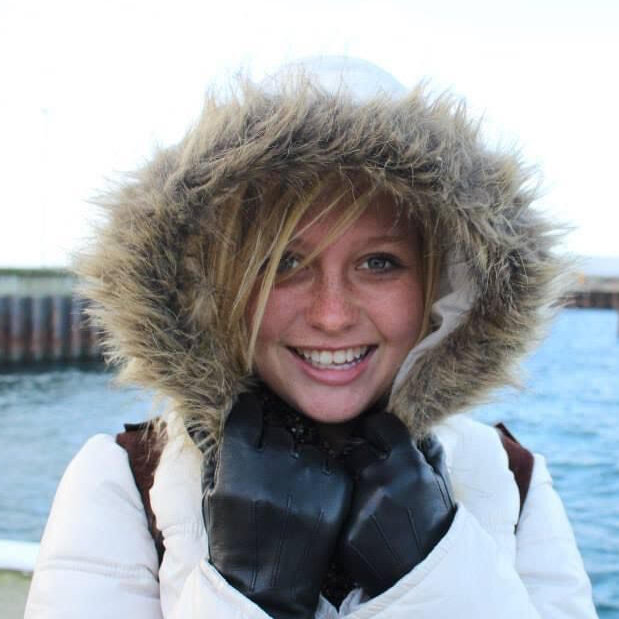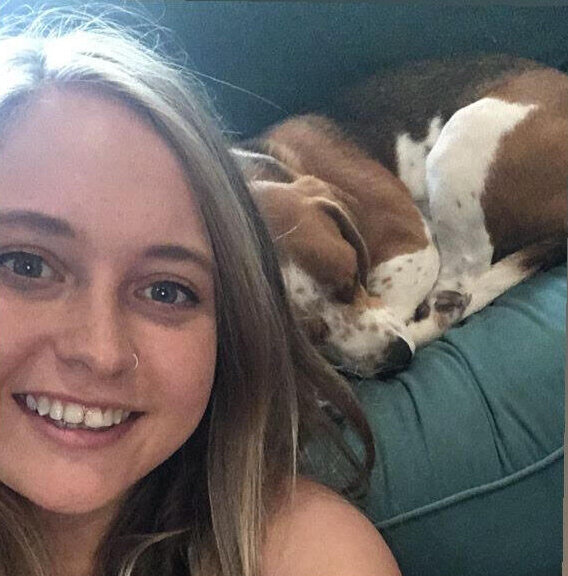Meet Steph, a 25-year-old social media manager and content creator.
Steph is a Rhodes University graduate with a Bachelor of Journalism with distinction, majoring in Journalism, Media Studies, and Anthropology. She is a high-functioning individual who has always been good at completing tasks requiring periods of immense focus. She is charming, witty, and a great conversationalist with a striking presence that people gravitate towards.
At 17, Steph was diagnosed with Bipolar II Disorder. This type of Bipolar disorder is generally less severe than Bipolar I. It is characterized by depressive and manic episodes (sometimes called hypomanic episodes) that are less extreme and shorter than those in Bipolar I. This type of disorder is often misdiagnosed as major depression. Steph says her symptoms can get quite severe during a manic episode, resulting in her going into a complete blackout or hallucination.
Steph’s Bipolar II onset was triggered by a traumatic external physical event: she was attacked at age 14. The assault became the catalyst for subsequent anxiety and panic; these stressors can trigger Bipolar II episodes in those genetically predisposed. After the assault, she went through a terrible period, where she experienced severe depression and could not sleep properly. She eventually saw a sleep therapist and soon after was diagnosed with depression.
“It got to a point where I didn’t even feel depressed, my mind was racing all the time, I couldn’t sleep, I couldn’t eat, I was just in a constant state of tenseness.”
Steph describes herself as a perfectionist, so feelings of panic and anxiety weren’t foreign to her.
“I was always panicked, my thoughts would constantly race, I couldn’t sleep, and I could never calm down. But I did very well at school, and during a manic episode, I was hyper-focused and just wanted to do everything all of the time. I was like, how can I be depressed when I want to do it all, all at the same time, and my mind is just permanently racing.”

This constant adrenaline high did not feel right for Steph, but she was told it was just her anxiety and depression.
As she started college, Steph began experiencing repeated manic episodes, resulting in impulsive, reckless behavior. She was seeing a psychologist at the time along with a general practitioner, but not a psychiatrist. At this point, she had been misdiagnosed with depression and was unaware of any potential Bipolar II comorbidity. However, her behavior and episodes were of concern, and the wrong diagnosis, coupled with the prescription of medication for the incorrect condition, made Steph’s symptoms more severe.
“That lack of proper diagnosis can be dangerous,” Steph explained.
Steph’s aunt was diagnosed with Bipolar Disorder and spent time in an asylum. This established Steph’s reference point for the disorder, along with the preconceived and stereotypical idea that people with Bipolar are insane and need to be institutionalized.
“If you have a mental health condition or struggle with a mental disorder, others think it must be this extreme thing. But because I’m a control freak, I’m very good at masking my appearance; it’s not something people would expect from me. Unless I’m in a crazy manic episode, and people would respond with, “oh my God, you’re so much fun!”
Eventually, it all became too much, and after a very impulsive decision that landed Steph in the hospital, she decided to return home to her family. She finally opened up about the assault she had been hiding and continued to open up about not coping with life. Her family knew she was seeing a sleep therapist but did not ask about it.
“My parents thought because I was high performing and did well at school, that nothing was wrong.”
When Steph was asked why she never said anything to her parents about her struggles, she responded:
“When you’re that young, either everyone is diagnosed with ADD, and you don’t want to come off as attention-seeking, or you don’t want to seem as though you are self-diagnosing. So people never talk about mental illness or mental health unless you’re clinically ‘asylum insane.’ Then it is justified.”
After her hospitalization and subsequent antidepressant regimen, Steph recalls how closing her eyes resulted in her just seeing colors. She experienced a 3-month blackout in which she could not remember a single thing. She recalls experiencing auditory hallucinations: she would go into a social setting when she was high or feeling manic, and she would only remember everyone saying nice things about her. She would even hear voices outside her door that weren’t there.
Eventually, after coming clean and admitting she was struggling and could be a possible danger to herself, her mom checked her into a clinic.

“The clinic changed my life; it’s the best thing I’ve done. I came into the clinic thinking they were all ‘just going to be complete crazies,’ but most of them were just normal, regular people. Mental illness isn’t about being crazy and unbearable to be around. Normal people struggle with this, and it is a normal thing. None of these people were like, ‘I’m scared of you.’”
The clinic helped her deal with her mental health issues and the associated stigmas. The clinic is where she was officially diagnosed. Spending time with people with similar circumstances helped normalize the whole process.
When asked, “How did you cope with transitioning and accepting your diagnosis?” Steph responded: “In the clinic, a lot of time was spent on educating myself about my mental illness, what it means, and what symptoms to look out for. Bipolar is such a big word; it’s connected to having multiple personalities and being back and forth. It gets swept under the carpet often when say a person is moody or has a shift in their emotions; the immediate response is, ‘oh don’t be bipolar now,’ seldom realizing the gravity that statement holds.”
When asked, “How did you arrive at the point where you could be so open about your diagnosis?” Steph replied: “In the beginning, I got very good at masking my mental health issues and suppressed them a lot. I became very hyperaware to function ‘normally’ in society.”
Steph explains how the clinic made her very comfortable with her diagnosis because they normalized it and did not make it a massive ordeal. When she went back to college, she had no choice but to be open and communicative to her peers and classmates so they would be aware of her mental state. This forced her to become comfortable with her diagnosis, especially in a high-stress academic environment where there are a lot of triggers and potential setbacks.
She then became very involved in mental health awareness groups; while she was finishing her journalism degree, she authored numerous articles related to mental health and illness.
“It’s a life sentence, but not really. It’s just the time between the episodes goes for so long that it feels normal, until you realize, oh, I’ve been in an episode.”
In the past several years, Steph has felt much more in control of her life, especially during her transition into adult life and the working world. She’s become good at recognizing her trigger signs and picking up when things are wrong. Good friends and support systems have helped keep her on track.
What do you do to check in with yourself?
A tremendous amount of self-awareness was developed through her mood-tracking efforts. She journaled, made numerous diary entries, and published many personal essays. Steph enjoys watching Tik Tok videos as her experiences are highly aligned with their mental health topics. A lot of sensitive and heavy subject material is shared and created in an easily relatable and lighthearted manner.
What advice would you give to people diagnosed with bipolar or dealing with someone with bipolar?
“The important thing is to be open to sharing, and to break the Bipolar stigma. The best way you can support me is by understanding it. Read up about it, do research, and ask questions. It is something deeply personal, so people don’t often feel comfortable asking questions.” Says Steph, “I can’t believe I got to 25, but I feel stable.”
By continuing to have these conversations, sharing experiences, and creating awareness about mental health, we will break the stigma.
The following link will take you to online work created by Steph; the title of the work is: “Emotional Baggage I’m Taking With Me Into the Apocalypse”.
Do you or someone you love have a Brain Story to share? We’d love to feature you! Head over to our Brain Story page to learn how to submit your Brain Story. To learn more about our mission to find a cure for brain and mental health-related disorders worldwide, please visit our website at The United Brain Association. If you’d like to receive updates, news, scheduled events, or more information about our ongoing donor-funded research projects, sign up for our email newsletter by clicking here. Together we can find a cure for brain disorders.

Make a Donation, Make a Difference
We have a close relationship with researchers working on an array of brain and mental health-related issues and disorders. We keep abreast with cutting-edge research projects and fund those with the greatest insight and promise. Please donate generously today; help make a difference for your loved ones, now and in their future.
The United Brain Association – No Mind Left Behind




